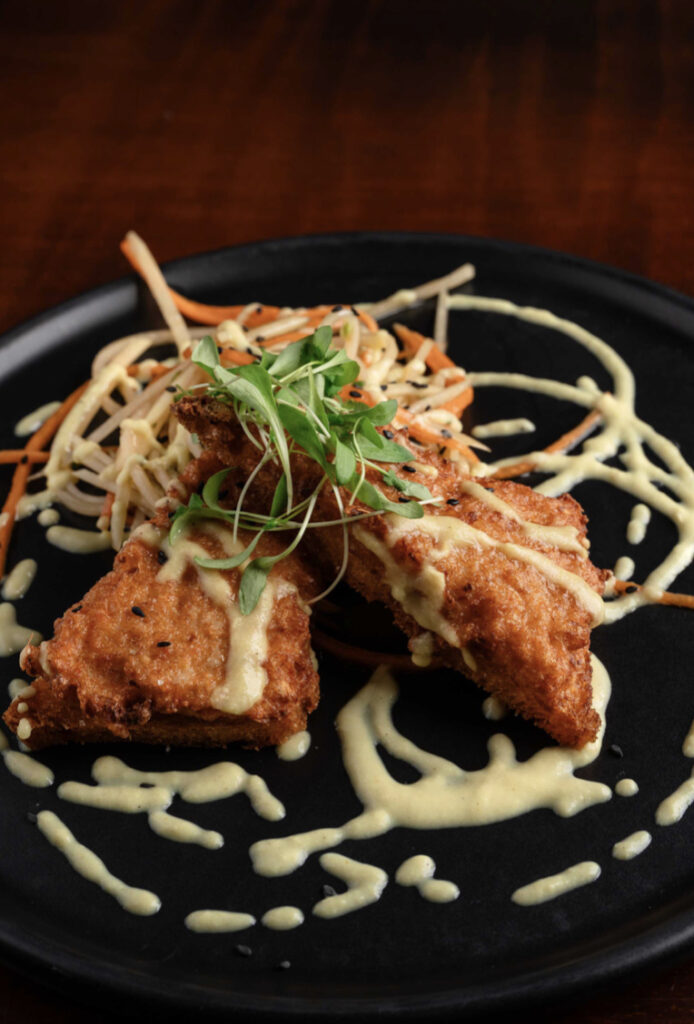We’re celebrating Asian Heritage Month by profiling some of our favourite professionals in Vancouver’s restaurant and food industry, like Straight and Marrow chef/owner Chris Lam. Oh, and their favourite recipes, too! —Vita Daily
Can you share a bit about your personal journey as a chef and how your Asian heritage has influenced your culinary style and approach to cooking?
I am a fourth-generation chef and grew up spending a lot of time in Chinese kitchens. Whether is was in a restaurant setting or at home with my grandmother my life seemed to always revolve around food. It was inescapable no matter how hard I tried to do something else with my life. I think that the main thing I carried with me from my meals growing up was just the concept that food brings people together. Meals are meant to be shared and enjoyed with other people. It is no secret that Hot Pot is my favourite meal and I could eat that anytime. I try to convey that sense togetherness and enjoyment with my style of cooking.
What inspired you to pursue a career in the culinary arts, and how have your cultural roots shaped your culinary identity and the dishes you create?
I honestly believe that no matter what I did or tried to do I would have ended up becoming a chef, there was little choice to it and believe me I tried very hard to pursue different avenues. At the end of the day, you have to do what makes you happy and nothing provided more joy to me than eating with family and friends. At my restaurant Straight and Marrow, we exclusively serve sharing plates. This is completely calculated as I grew up in environments where multiple dishes were always in the middle of the table to be shared. I believe this is the best way to enjoy meals.
In what ways do you incorporate elements of your cultural background into your culinary creations? Are there specific ingredients, techniques, or flavors that hold particular significance for you?
There are multiple important elements of Cantonese cuisine that I have drawn from that I use in my cooking style. Utilizing all parts of an animal is very important. Not only does it reduce waste but a lot of the more traditionally frowned about parts are actually the most delicious. An example of this is crab heads, this was always fought over when I was growing up and it shocked me to find out that crab heads were discarded as people only cared about the meat. This led to a dish I created that solely focuses on the crab head that I used to make an aioli out of. Another important element that I utilize a lot is the mixing of various proteins, poultry with seafood, pork to flavor beef stocks. The use in multiple proteins in single dishes is not as common in other cuisines I find. At the restaurant, one of my favourite creations is an Uni Demi that goes on a duck breast. This sauce has sea urchin, beef bones, chicken wing tips and is paired with duck.
Vancouver is known for its diverse culinary scene. How do you navigate blending traditional Asian flavors with contemporary techniques to create innovative and unique dishes that resonate with diners?
Flavor conquers all. I think it is important to utilize techniques and flavors from all sorts of different cultures to make the best final dish. Braising meats is a perfect example, Jewish cooking uses vinegar for tenderness and flavor, French technique relies a lot on temperature control, Chinese technique is based a lot on pre marinades. It is my job to find what combination of all the techniques and flavors will result in the best final product. The combinations are endless and there is always more to learn. The same goes with ingredients, just because an ingredient is traditionally Asian, does not mean that it is exclusive to that type of food. I use this concept in a lot of my food where I can bring ingredients that I love and grew up with and introduce them to a whole new generation of diners.
As we celebrate Asian Heritage Month, what message or story do you hope to convey through your cuisine, and how do you see food as a powerful medium for cultural expression and understanding?
Food is a universal language. Taste doesn’t lie. Our food is our history on a plate, it can come with stories of how we reached this point and is invaluable in cultural exchange to understand where someone else is coming from. Many stories and insight can be learned as well as a happy full stomach.
Shrimp Toast

Shrimp mix
50 g peeled ginger
5 cloves of garlic
1 small can of waterchestnuts
1 lb peeled shrimp
1 tsp salt
1.5 tbs sesame oil
1.5 tbs soy sauce
3 tbs corn starch
1 tsp white pepper
1 egg white
Dipping Sauce
150 ml Black Vinegar
85 ml Soy Sauce
40 ml chilli oil
1 tbs garlic powder
50 g chopped cilantro
Add all dipping sauce ingredients in a bowl and whisk together, set aside until ready to serve. Combine all ingredients for shrimp mix in a food processor, pulse until desired texture is reached. Spread the paste uniformly on white bread, about ½ inch thick paste while pressing gently to ensure it sticks. In a pan, heat about 2 cups of oil on medium/high heat. You want about ½ inch high of oil. Cook the toast paste side down for about 2-3 minutes before flipping to the bread side for another 1-2 minutes or golden brown. Drain onto paper towel. Serve with dipping sauce. Serves 6.

Be the first to comment